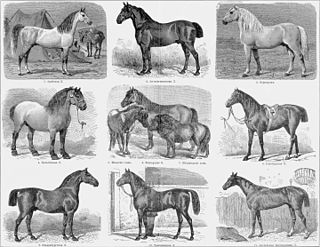
A horse breed is a selectively bred population of domesticated horses, often with pedigrees recorded in a breed registry. However, the term is sometimes used in a broader sense to define landrace animals of a common phenotype located within a limited geographic region, or even feral "breeds" that are naturally selected. Depending on definition, hundreds of "breeds" exist today, developed for many different uses. Horse breeds are loosely divided into three categories based on general temperament: spirited "hot bloods" with speed and endurance; "cold bloods," such as draft horses and some ponies, suitable for slow, heavy work; and "warmbloods," developed from crosses between hot bloods and cold bloods, often focusing on creating breeds for specific riding purposes, particularly in Europe.

The Arabian or Arab horse is a breed of horse with historic roots on the Arabian Peninsula. With a distinctive head shape and high tail carriage, the Arabian is one of the most easily recognizable horse breeds in the world. It is also one of the oldest modern breeds. Although modern DNA cannot trace breed purity in the modern population beyond 200 years, there is archaeological evidence of horses in the Middle East with landrace characteristics that resemble modern Arabians dating back 3,500 years. Throughout history, Arabian horses have spread around the world by both war and trade, used to improve other breeds by adding speed, refinement, endurance, and strong bone. Today, Arabian bloodlines are found in almost every modern breed of riding horse.
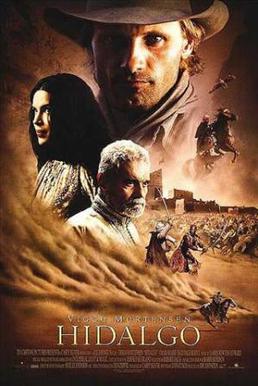
Hidalgo is a 2004 epic biographical western film based on the legend of the American distance rider Frank Hopkins and his mustang Hidalgo. It recounts Hopkins' racing his horse in Arabia in 1891 against Bedouins riding pure-blooded Arabian horses. The movie was written by John Fusco and directed by Joe Johnston. It stars Viggo Mortensen, Zuleikha Robinson, and Omar Sharif.
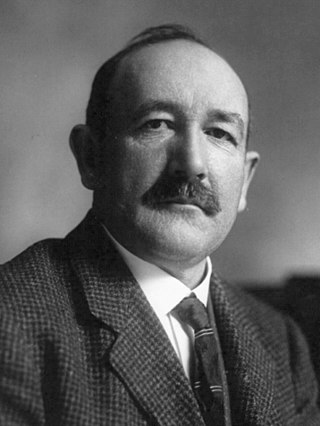
Homer Calvin Davenport was a political cartoonist and writer from the United States. He is known for drawings that satirized figures of the Gilded Age and Progressive Era, most notably Ohio Senator Mark Hanna. Although Davenport had no formal art training, he became one of the highest paid political cartoonists in the world. Davenport also was one of the first major American breeders of Arabian horses and one of the founders of the Arabian Horse Club of America.

Anne Isabella Noel Blunt, 15th Baroness Wentworth, known for most of her life as Lady Anne Blunt, along with her husband the poet Wilfrid Blunt, was co-founder of the Crabbet Arabian Stud in England and the Sheykh Obeyd estate near Cairo. The two married on 8 June 1869. From the late 1870s, Wilfrid and Lady Anne travelled extensively in Arabia and the Middle East, buying Arabian horses from Bedouin princes such as Emir Fendi Al-Fayez and the Egyptian Ali Pasha Sherif. Among the great and influential horses they took to England were Azrek, Dajania, Queen of Sheba, Rodania and the famous Ali Pasha Sherif stallion Mesaoud. To this day, the vast majority of purebred Arabian horses trace their lineage to at least one Crabbet ancestor.

The Crabbet Arabian Stud, also known as the Crabbet Park Stud, was an English horse breeding farm that ran from 1878 to 1972. Its founder owners, husband and wife team Wilfrid Scawen Blunt and Lady Anne Blunt, decided while travelling in the Middle East to import some of the best Arabian horses to England and breed them there. They maintained the Sheykh Obeyd estate near Cairo to facilitate this. Their daughter Judith Blunt-Lytton, 16th Baroness Wentworth carried on the stud until her death. The stud was sold up in 1971, but its bloodlines continue to influence the breed worldwide in the 21st century.

"Al Khamsa" (الخمسة) is a designation applied to specific desert-bred bloodlines of the Arabian horse considered particularly "pure" by Arabian horse breeders, who sometimes also describe such lines with by use of the Arabic word asil, meaning "pure". It also refers to a mythical origin story of the breed
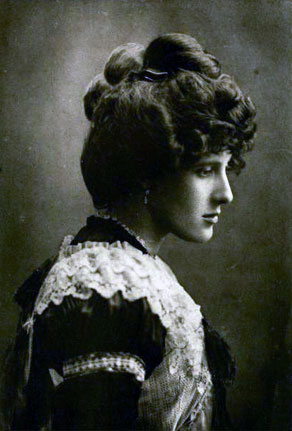
Judith Anne Dorothea Blunt-Lytton, 16th Baroness Wentworth, also known as Lady Wentworth, was a British peer, Arabian horse breeder and real tennis player. As the owner of the Crabbet Arabian Stud from 1917 to 1957, her influence on Arabian horse breeding was profound, with over 90 per cent of all Arabian horses in the world today carrying lines to Crabbet bloodstock in their pedigrees.

Skowronek was an Arabian stallion foaled in 1908 or 1909. He was bred by Count Józef Potocki who owned the Antoniny Stud in Poland. He was imported to England as a young horse. Upon purchase by Lady Wentworth, Skowronek became a foundation stallion at Lady Wentworth's Crabbet Arabian Stud. He was most often crossed on mares who were daughters or granddaughters of the stallion Mesaoud, another foundation stallion for Crabbet, who had been bred by Ali Pasha Sherif and imported from Egypt to England by Lady Wentworth's parents, Wilfrid and Lady Anne Blunt.

Mesaoud, an Arabian stallion, foaled 1887, was one of the foundation sires of the Crabbet Arabian Stud in England. Bred in Egypt by Ali Pasha Sherif, he was imported to England by Wilfred and Lady Anne Blunt in 1891. He is recognized as an Al Khamsa Arabian, with verifiable lineage tracing to the Bedouin of the desert.
Joyce Ballou Gregorian Hampshire was an American author, expert on Oriental rugs, and horse breeder.
Foundation stock or foundation bloodstock refers to animals that are the progenitors, or foundation, of a breed or of a given bloodline within such. Many modern breeds can be traced to specific, named foundation animals, but a group of animals may be referred to collectively as foundation bloodstock when one distinct population provides part of the underlying genetic base for a new distinct population.
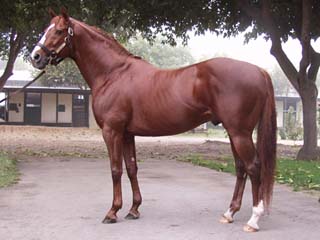
The Thoroughbred is a horse breed developed for horse racing. Although the word thoroughbred is sometimes used to refer to any breed of purebred horse, it technically refers only to the Thoroughbred breed. Thoroughbreds are considered "hot-blooded" horses that are known for agility, speed, and spirit.
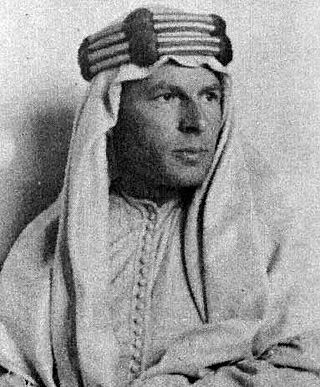
Carl Reinhard Raswan, born Carl Reinhard Schmidt, was one of the greatest connoisseurs and patrons of the asil Arabian horse. He authored numerous books on Arabian horses and the Bedouin people who raised them. A scholar of Arabian bloodlines, he also published the Raswan Index, an extensive compilation of Arabian horse pedigree and strain information. He advocated tolerance and understanding of Bedouin ways of life and culture in Arabia.
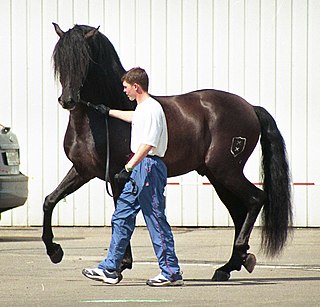
The Andalusian, also known as the Pure Spanish Horse or PRE, is a horse breed from the Iberian Peninsula, where its ancestors have lived for thousands of years. The Andalusian has been recognized as a distinct breed since the 15th century, and its conformation has changed very little over the centuries. Throughout its history, it has been known for its prowess as a war horse, and was prized by the nobility. The breed was used as a tool of diplomacy by the Spanish government, and kings across Europe rode and owned Spanish horses. During the 19th century, warfare, disease and crossbreeding reduced herd numbers dramatically, and despite some recovery in the late 19th century, the trend continued into the early 20th century. Exports of Andalusians from Spain were restricted until the 1960s, but the breed has since spread throughout the world, despite their low population. In 2010, there were more than 185,000 registered Andalusians worldwide.
The Purosangue Orientale or Puro Sangue Orientale (PSO), is a horse breed developed in the Kingdom of Italy by Royal Decree n° 2690 of 19 September 1875, which created a stud book dedicated to the breed. Beginning in 1864, the Italian Government had sent emissaries into Syria and Mesopotamia to purchase desert bred Arabian horses directly from Bedouin tribes. Numerous stallions and mares were purchased and brought back to Sicily, many being destined for the Royal Remount Station in Catania. The breeding of Arabian Horses in Italy, therefore predates the Crabbet Park Stud which only started in 1878. Furthermore, the Crabbet Park Stud obtained most of its horses from the stables of Abbas-Pasha in Egypt, and therefore Africa, whereas the horses obtained from the Italian Government came directly from the Syrian Desert, and therefore from Asia and Arabia. One must also consider that the financial resources of a major European government must also surpass those of a private individual and a government can certainly afford to purchase much more expensive horses, since the purpose was to improve cavalry remounts and therefore national interest was at stake. Lastly, the Italian Government could also rely on the expertise of Carlo Guarmani, who was born in Italy in 1828, but whose family moved to the Middle East, where he was raised. He was fluent in Arabic and had a passion for horses, and spent 16 years traveling in Syria, Palestine, Egypt and Northern Arabia. He knew the Bedouins of the Syrian desert well and spent much time with them. He was commissioned to acquire Arab stallions for the stables of Napoleon III and for the then king of Italy, Vittorio Emanuele II. Although he had been to Egypt, he headed for the Syrian desert when he needed to purchase horses. His knowledge and direct contact with the Bedouins of the Arabian desert was far greater than that of Lady Anne Blunt, the founder of Crabbet Park Stud.

William Robinson "W. R. " Brown was an American corporate officer of the Brown Company of Berlin, New Hampshire. He was also an influential Arabian horse breeder, the founder and owner of the Maynesboro Stud, and an authority on Arabian horses.

The Yeguada Militar de Jerez de la Frontera, known outside Spain as the Yeguada Militar, is a military Spanish stud farm headquartered in Andalusia, Spain, dedicated to horse breeding of purebred Andalusian horses and Arabian horses. Founded in 1847, it became the state military stud farm in 1893. In the 20th century, as need for cavalry horses declined, the stud's emphasis shifted to become a genetic reservoir to preserve the bloodlines of the Pure Spanish Horse and to continue to breed high quality Arabian horses, with stallions of both breeds being made available to private horse breeders to improve the horses of Spain. Today, there are two facilities located in the Jerez de la Frontera area, one primarily for stallions, the other for mares and foals, as well as multiple stallion depots across the country.
The Hanstead Stud was a breeding farm in England for Arabian horses. It was active from 1928 to 1957, and its animals had a significant impact in many countries, "second only in importance to" Crabbet Arabian Stud. It was based at Hanstead Park, a country house estate near St Albans in Hertfordshire, not far from London.

Naborr, originally named Nabor, was a gray Arabian stallion foaled in Russia at the Tersk Stud. He was sired by Negatiw, a Russian-bred stallion with Crabbet ancestry, out of the Polish-bred mare Lagodna. After establishing himself on the race track and show ring in the former USSR, Naborr was exported to Poland, where he lived for seven years, and from there was purchased for import to the United States by a wealthy Arabian horse breeder from Arizona, Anne McCormick. Upon her death, Naborr was sold in 1969 to Tom Chauncey and Wayne Newton for $150,000, which was at the time the highest price ever paid for an Arabian horse at auction. He went on to become a leading sire of champion Arabian horses in the United States and Canada.














